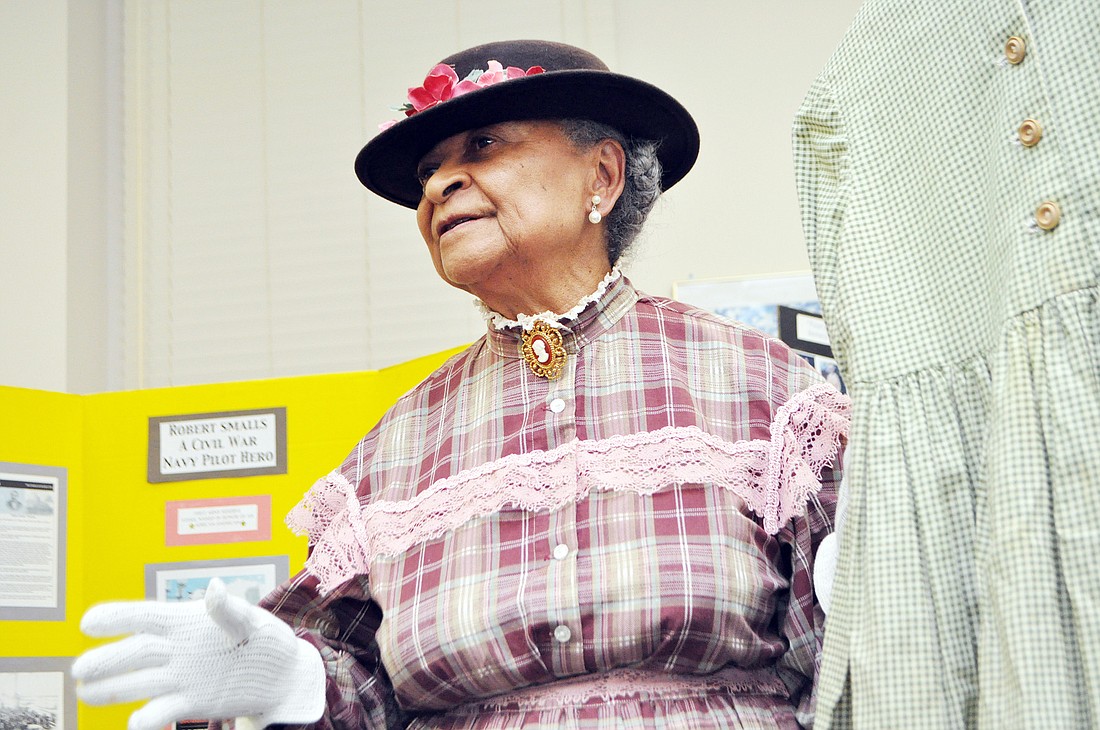- November 27, 2024
-
-
Loading

Loading

Mary L. Jackson Fears, Civil War re-enactor, will visit the Creekside Festival in period dress.
It all started when a librarian happened to stop by a Civil War reenactment.
Mary L. Jackson Fears and her family watched with interest as the Massachusetts Regiment fought in the Battle of Olustee, which originally took place Feb. 24, 1864.
“Three black units fought in the battle,” said Fears, who lives in Daytona Beach. But when she talked to the re-enactors, they looked at the audience and said, “Where are the black people?”
Something clicked in Fears like the hammer of a muzzle-loading, .58-caliber rifled musket (the most common firearm used in the Civil War). She decided she would contribute to the re-enactment and also educate people generally about what blacks had done in the war.
There wasn’t much about blacks in the Civil War in the history books at the school where she was a media specialist, so she had to dig deeper. She was used to research; she has a master’s degree in library science, from Florida State University.
“I didn’t even know there were free black people in the South before the Civil War, before I started doing research,” she said. In fact, she said, there were about 200,000 free blacks in the South. She stopped telling fairy tales to kids at the school and instead focused on the untold history of blacks in the Civil War. Later, she expanded her efforts to re-enactment displays and performances.
“In my storytelling, I do not go into the slave-master relationship, with the cruelty,” she said. “Everybody already knows about the selling of families and the whippings. My programs are completely about the achievements of black people during the Civil War and before.”
Fears compiled her findings and wrote a book, which was published in 2004, by Heritage Books: “Civil War and Living History: Reenacting about ‘People of Color.’ How to begin, What to wear, Why re-enact.”
Some of her research also led a filmmaker to create a docudrama, “Filling the Gap: Forgotten Chapter of American History,” which was nominated for the 42nd-annual NAACP Image Award.
“Blacks gave a lot of noncombat service,” Fears said. “They served as spies and nurses and cooks. They helped build bridges. They basically did the dirty work to relieve the white soldiers so that they could fight. At the same time, you had a lot of blacks who served in the military and in the U.S. Navy.”
One of Fears’ favorite stories to tell is that of Robert Smalls. At 23, Smalls was a slave aboard a Confederate ship. On May 12, 1862, the white captain and crew of the ship left Smalls and other slaves on board and traveled ashore.
Smalls saw this as a great opportunity. He ended up sailing the boat out of the harbor in the middle of the night and giving the ship, which was full of munitions, to the Union forces. To hear the full story, be sure to ask Fears, at the Creekside Festival.